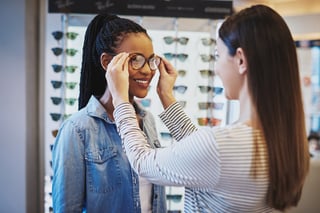 Add-on sales can make a monumental difference in your bottom line. Some of that comes from impulse purchases – self-generated sales that happen when customers glom onto items they had no idea they needed or wanted as they browse your store. But your floor staff can directly influence add-on sales, too, as they personally interact with customers.
Add-on sales can make a monumental difference in your bottom line. Some of that comes from impulse purchases – self-generated sales that happen when customers glom onto items they had no idea they needed or wanted as they browse your store. But your floor staff can directly influence add-on sales, too, as they personally interact with customers.
How? With suggested selling.
Occasionally, someone comes into your store looking to purchase multiple complementary items. They need a new suit but might also want a shirt and tie to go with it. Or they want flowers for their patio, but need pots and soil, too. Most of the time, though, customers have one particular purchase in mind – that suit, or those flower starts, for example. But if your floor staff is savvy enough, those customers can still leave with unplanned add-ons.
And they’ll be thrilled with their extra purchases. You’ve made their life easier, or better, by helping make the most of their planned purchase. Wow! What a great experience.
Here are 8 ways your sales associates can use suggestive selling to increase add-ons and create customer loyalty at the same time:
- When it comes to the art of selling, floor staff are like matchmakers. It’s not about pushing merchandise on people to make more money. It’s about getting to know each customer as a person, so you can identify the most relevant, valuable extras to suggest. Like any conversation, that requires listening. So think of each customer as a friend you’re helping shop for the perfect choices.
- Know your inventory, in every detail. Introduce your floor staff to newly-arrived items, so they can be ready to relate some little insider tidbit about the item’s back story – who designed it? What makes it so special?
- Know your inventory availability, too. Inadvertently suggesting something that’s out of stock sets you and your customer up for failure. You’ve teased them with a great add-on, then disappointed them, all in one breath. Avoid this by using up-to-date inventory management/POS technology.
- Make overt suggestions – this necklace would be perfect with that dress.
- Or be more subtle – I bought this necklace myself, and I can’t believe how often I’ve worn it.
- If a customer is holding a product in hand, suggest items that would go well with it.
- If they have an objection or they’re on the fence about a product, suggest an alternative that could resolve their concern. Perhaps an accessory to perk up the outfit. Or a lower-priced similar item.
- Merchandise displays that show complementary items together use visual cues to suggestively sell. Displays like this also give your floor staff something to physically reference when suggesting additional items to customers.
Ultimately, the key to boosting add-on sales is establishing a personal connection with each customer. Elevating their shopping experience builds trust. They’ll be back, looking for a repeat of that great experience and hoping that, once again, you’ll suggest something sensational they wouldn’t have thought of themselves.
